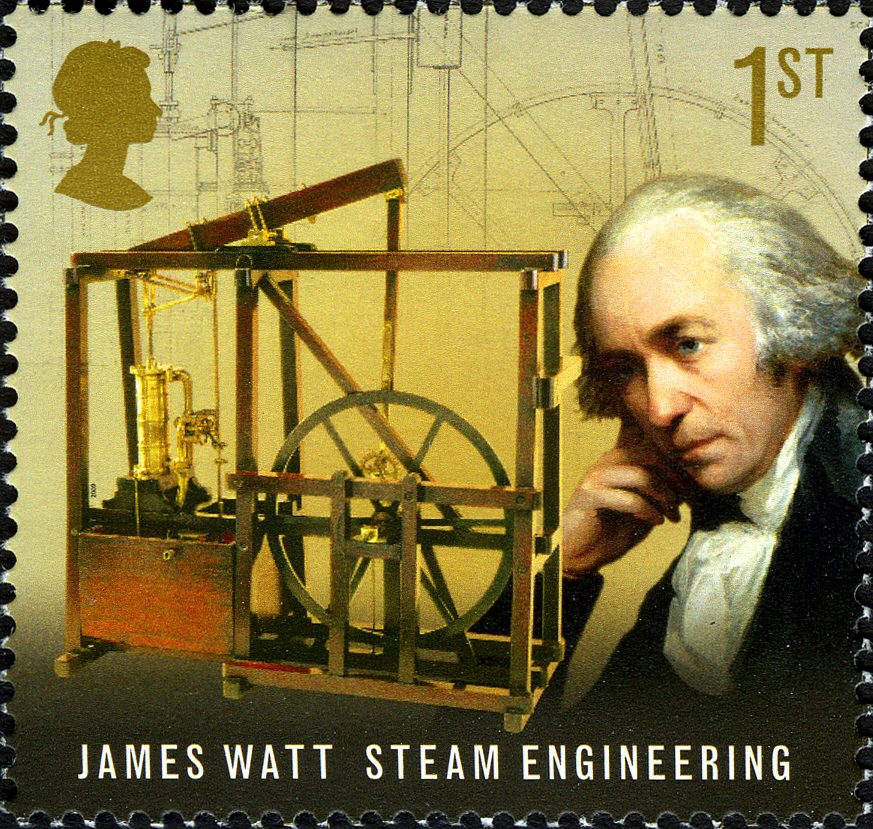Horsepower– 18th century Scottish engineer James Watt coined the phrase ‘horsepower’ based on his own equations. Since he was hoping his steam engine would perform work traditionally done by horses, such as moving heavy loads, pumping water from mines, or grinding mash at breweries, he needed a succinct way to compare what his invention could do with what his customers were used to seeing.
Watt multiplied the speed by the force of a working horse, and devised a formula for measuring strength: “Horsepower” is the unit of energy needed to move 550 pounds the distance of 1 foot in 1 second. A healthy human can sustain about 0.1 horsepower (I do a bit better if the dare is compelling enough), while a car generates several hundred.
Watt’s contraptions must have looked bewildering to the folks whom he wanted to use them…Farmers, miners, loggers, and beer brewers. So what the devices could do had to make simple sense to people. Comparing machine muscle to horseflesh was nearly as brilliant as the gizmo itself. and a clever marketing stunt- especially for an engineer. (See the ‘Dilbert’ comic strip) Watt’s machine-to-mammal analogy kept on working when cars were invented too, as the one competed with and gradually replaced the other. Today, we use the term ‘horsepower far more often in reference to vehicles than the actual animals. Well, maybe not in Kentucky. Or Wyoming.
To sum up: James Watt used horses’ efforts as a unit of measurement for his efforts. Electrical engineers use Watt’s name as a unit of measurement for their efforts. Watt do you know?
Horse Sense– We’ve shown, albeit indirectly, that phrases may survive transition even when the technology that spawned them does not. ‘Kilowatt’ is almost a misnomer in a nation that sampled, then discarded, the metric system. Polycrystalline silicon-based wafers, micro-inverters, and other solar apparatus may look like Watt’s steam engines did to a ye olde ploughman for many of us. But they’re here to stay, and they work great, and we’ll get used to them.
Metal machinery is synonymous with the industrial revolution. Solar energy is becoming synonymous with our current technical revolution. Alternatives to the accepted norms often become improvements upon them. Solar is an improvement on the currently accepted, though unacceptable, utility methods and rates.
Kilo-What Will You Do? Recent events have drawn attention to the wisdom of using alternatives to PG&E’s escalating issues, matched only by their rate hikes. Electric grids and power companies work better when supplemented by solar energy. The local utility giant’s own website endorses this claim. Sunlight is measurable (if not entirely definable) on some fronts, such as its speed and predictable conversion to kilowatt hours of electricity. So is money. Rooftop = Cash. Fill out our usage form and we’ll let you know how much over how long. It’s free to find out, and profitable to try out. -Lee Stilwater

